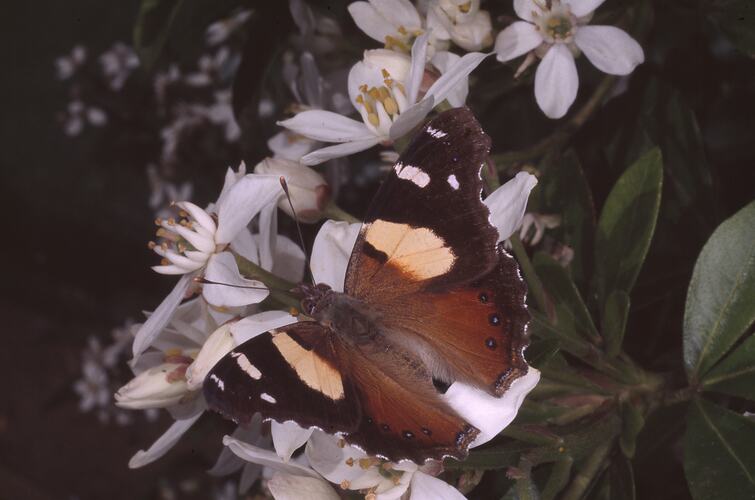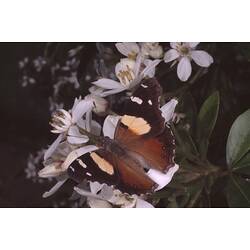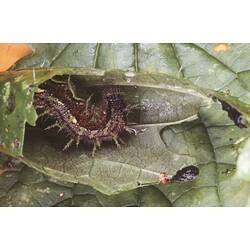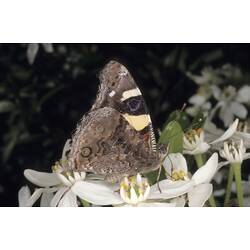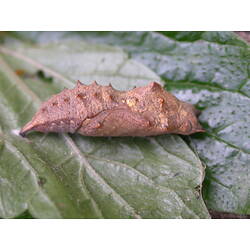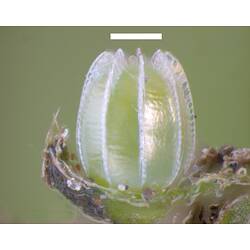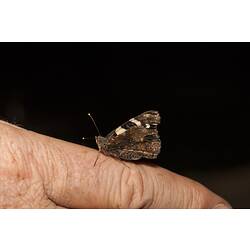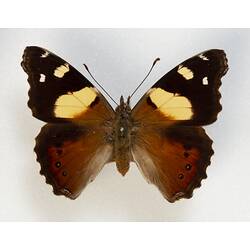General Description
Above: forewing black with an orange-brown base and a wide central cream patch. Hindwing black with a large red central patch. Below: similar to above, but with grey and brown patterns. No tails on the wings. Antennae clubbed. Wingspan up to 6 cm.
Biology
Yellow Admiral butterflies begin flying in early spring and produce several generations of young during the warmer months. Their caterpillars are covered in rows of short spines and rest in curled-up nettle leaves during the day. They are most common in south-eastern mainland Australia with scattered populations through the rest of the country.
Distribution
South western and eastern mainland Australia and Tasmania.
Habitat
Most habitats from sea level to mountain tops, including urban backyards and wastelands.
More Information
-
Animal Type
-
Animal SubType
-
Brief Id
This is a fast moving red-brown and black butterfly with a cream patch on its forewings.
-
Colours
Brown, Yellow
-
Maximum Size
6 cm
-
Habitats
-
Diet
Nectar
-
Endemicity
-
Commercial
No
-
Conservation Statuses
CITES: Not listed, FFG Threatened List: Not listed, DSE Advisory List: Not listed, IUCN Red List: Not listed
-
Plants
Nettles
-
Flight Start
January
-
Flight End
December
-
Taxon Name
-
Scientific Author
(Fabricius, 1775)
-
Common Name
Yellow Admiral Butterfly
-
Other Names
Australian Admiral , Admiral
-
Kingdom
-
Phylum
-
Subphylum
-
Class
-
Subclass
-
Superorder
-
Order
-
Suborder
-
Superfamily
-
Family
-
Subfamily
-
Genus
-
Species Name
itea
